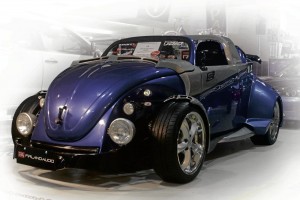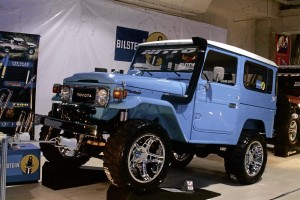Filipino car enthusiasts are asked why they modify their answer: ‘It’s personal’
Self-expression comes at a cost. No, it doesn’t mean some serious jail time. The cost isn’t political. It’s literal. Especially in the world of “automo-blinging”—that is, transforming a stock car into an expression of individuality, making your own ride into a ride that is truly your own—modifying comes at a price.
A veteran car show organizer has also revealed that here in the Philippines, self-expression via car modification is more important than the cost it entails, at least for those who do get to modify their cars.
A survey by the Philippine Automotive Aftermarket Industry Association conducted during the 2011 edition of the Trans Sport Show revealed that 34 percent of the survey respondents ranked quality of the aftermarket modification as their top priority when modifying their own cars. Cost came in second at 20 percent. Looks was third at 10 percent, followed by brand (6 percent), availability (one percent), and popularity (0.46 percent). Twenty percent of the respondents couldn’t make up their minds. The respondents were composed of 1,108 visitors—visitors to the Trans Sport Show and members of car clubs.
The survey was made last year and was revealed exclusively to Inquirer Motoring just last week, during the 2012 edition of the Trans Sport Show held at the SM Megatrade Hall in Mandaluyong City. The Trans Sport Show, at 21 years running, is the longest-running auto show competition in the Philippines, and the mecca for automobile modifiers and restorers.
Moving statements
Almost 70 percent of those who customize their cars listed “personal statement” as their top reason for customizing, while 32 percent said they did it for function. Four percent did it for commercial purposes while only five percent did it for competition.

1963 MINI Cooper of Equal trade (Meguiar’s Certified Car Crazy Award, Reserve Best of Show Nostalgic-
Notably, 39 percent of the respondents were Toyota owners, followed by Honda owners (24 percent), Mitsubishi (22 percent), Nissan (11 percent), Ford (8 percent), Isuzu (6 percent), while the rest owned Mercedes Benz, Hyundai, BMW, Mazda, Suzuki, Subaru, Porsche, Jaguar and Ferrari.
2 types of modifiers
Trans Sport Show judge Ed Salonga, director of Manila Sports Car Club, described to Inquirer Motoring the two types of car owners: The first type of car owner is able to do whatever he or she pleases with his or her car because he or she has the money. These owners, he said, are catered to by the name brand products.
The second type is what he calls the “surplus” guy. “He still knows and likes his car, but he will scrounge around for the surplus parts in order to modify. We don’t have junkyards here like they have in the United States. In America there are the 50-dollar guys. They pay $50 going to the junkshops with their toolbox. They get as many parts as they need to get their cars up and running again. They’ll clean it up, they’ll try to make it new. They would probably upgrade their accessories—from a regular-looking Toyota to the top-of-the-line Toyota using surplus parts. That’s the other side of the Pinoy.”
Salonga added that even among the moneyed car owners, there still is a subtype: The “new money” (self-made) new-rich class, and the “old money” (old-rich, inherited wealth) class. Ed said the “old money” class were the ones that wouldn’t care about the costs of modifying.
Trans Sport Show judge Boyer Kalugdan agreed that the “old money” had to maintain a certain level of prestige, so they would buy the most expensive cars, as well.
“The ‘new money’ would never part with his own money just like that… He’d say, ‘You can’t fool me because I can buy a particular part in the States. I don’t need to depend on your dealership. I can bring that in.’”
Salonga noted that such a “smart” car owner would not be necessarily buying a product of lesser quality, but would tend more to haggle with the dealer of the aftermarket product or service.
“He orders a full set of suspension (online) because he knows that if he buys it here it will cost him 200 percent more. If he buys it there, it wouldn’t cost as much as buying here. It’s easier to Google for racing suspensions. Everything’s there,” Salonga said.
Dealers vs D-I-Yers
Kalugdan added that it would now be harder for dealers to offer to such Pinoy buyers, but then again, he reiterated that the key to the Pinoy car aftermarket heart is still the service.
Salonga said that if a dealer is trustworthy, and the local physical presence of the dealership that assures the owner that the distributor/dealer is there for him, along with the expertise of the staff and technicians putting together the service and parts for the car, then these would be the dealers/distributors’ advantages over other sales media.
“The dealer’s expertise comes in handy compared to do-it-yourselfers. The dealer would tend to say, ’I’m not just a distributor or retailer, I’m an expert. I know if the shock absorber for a particular car is okay or not. These are things I might want to put in as a distributor to edge over guys who want to do it themselves. It’s a tough thing. You want to build some sort credibility. Once you get credibility going, then people will come to you. But that will take a while.”
















